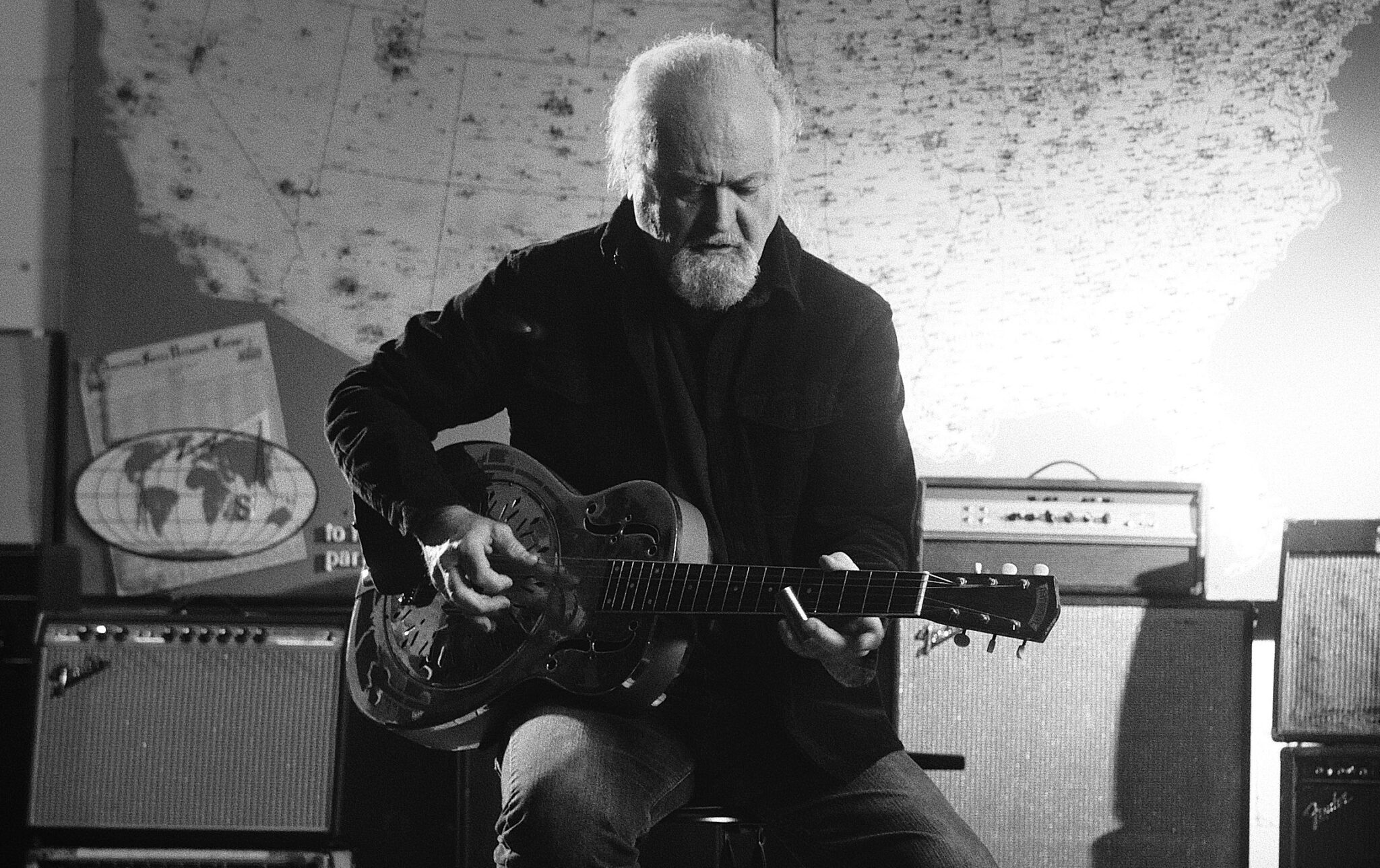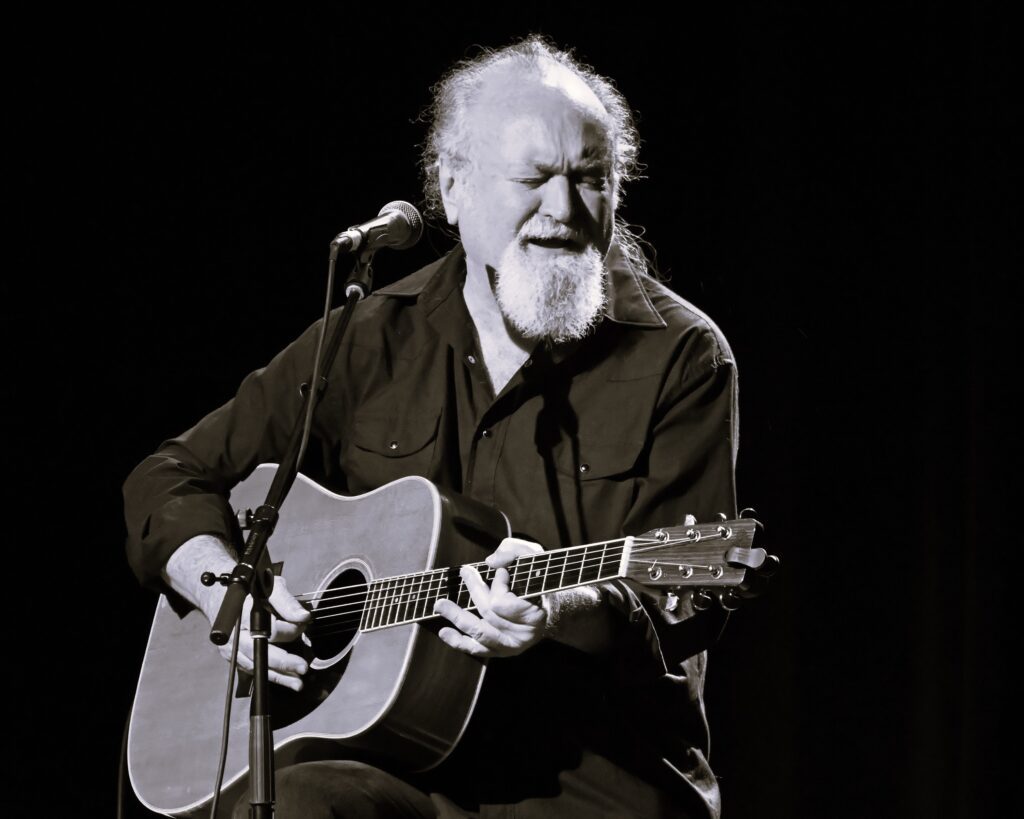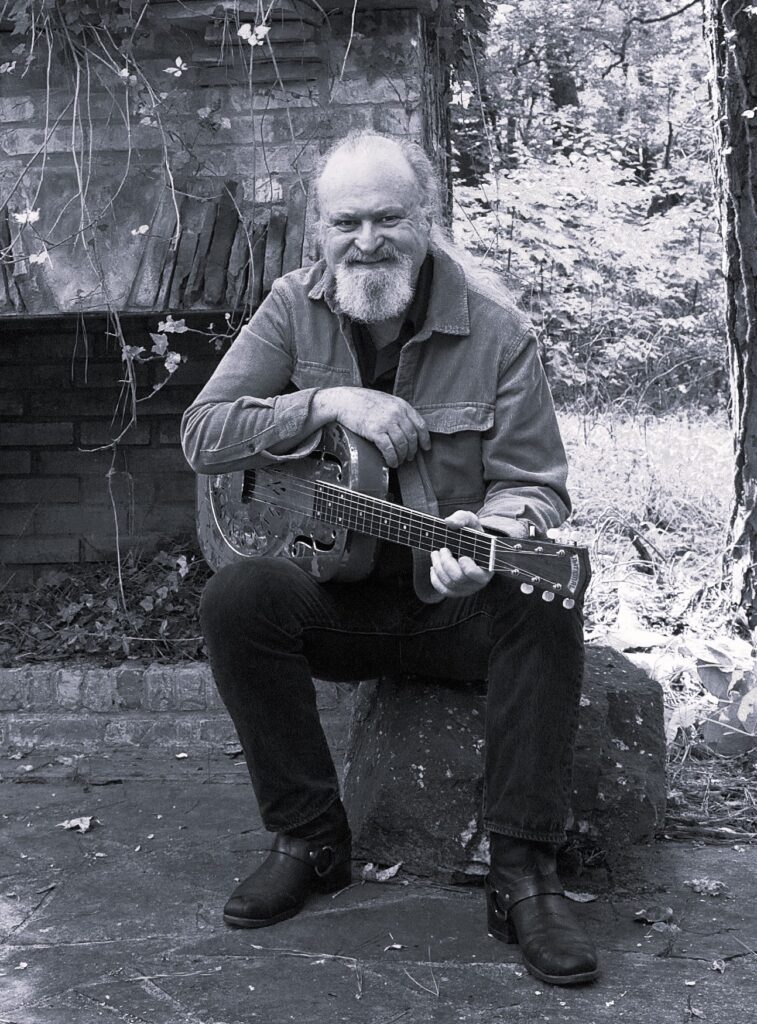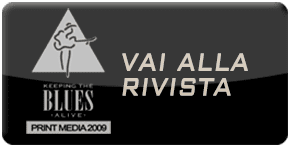Tinsley Ellis – Back To The Acoustic Roots
by Matteo Bossi
We had talked with Tinsley Ellis a little more than two years ago (Il Blues n. 158) and we did that again now that he is about to put out a new record,”Naked Truth” (Alligator). It is his very first acoustic album, a project he has approached with a student like attitude and another way to fulfill his lifelong passion for music.
Last time we spoke you said your next record was gonna be either an acoustic one or a collection of songs you like, covers or from your past. So this is the acoustic one.
Yes it is. I’ll save the influential covers album for another day! This is an album I’ve always wanted to make and that my fans have been asking for a very long time. This is the format that I’m performing with now and I really enjoy it, connecting with the audience, I enjoy playing my songs and talking about how I wrote them…true stories. And this particular album is an addition to nine original songs there are three songs that are part of my concerts. The Muddy Waters song, the Leo Kottke song and the Son House one.
On an old record of yours, “Cool On It” you did a version of that Kottke song, “Sailor’s Grave On The Prairie”.
Oh that is true! I did an electric version on that album, for this new one I did an acoustic version. But it is a song I’ve been playing for fifty years. I’ve learned it from the very first Leo Kottke album, which is a wonderful album and I’ve been playing it ever since then. I’m always learning something new watching Kottke’s videos, it’s a song that’s still changing even if I’ve been doing for so long.
So you’re a fan of Kottke, John Fahey or Robbie Basho.
Oh yes and Bert Jansch, Jimmy Page, Stephen Stills who is a great acoustic guitar player…this album is a combination of not just blues but of some folk music as well. There are I think five or six different guitar tunings, from standard to open G, drop D, D minor…I’m forgetting some. That is a way of folk music and it’s where my heart is right now, playing these songs acoustically.
Did you experiment with open tunings when you were learning to play guitar?
The first time I heard someone play in open tuning I think it was Brian Jones with the Rolling Stones, when they did The Little Red Rooster he probably tuned his guitar to a G chord and played slide. Then I realized it was like early Muddy Waters or Son House style. In terms of folk music I did not know anything about Bert Jansch…I got that kind of style through people like Jimmy Page for instance. It’s interesting that I tend to get my influences not only in blues but in folk music as well through British Blues. I think that’s what roots music is, passing down through generations and different players. Of course people would correct me and tell me that blues comes from certain places in Africa and that folk music comes from places in Scotland or Ireland…but I think you can go down further into the well and find what happened before.
And at some point they all connect.
They do and it all goes back to acoustic music. Acoustic is the model of all instruments. I guess I’m continuing to learn, I’m much more an electric guitarist than an acoustic so i actually attempted to make this album a year ago but I wasn’t ready. Then I went out on the road and did about one hundred shows, most of them with Marcia Ball and really learned a lot from that tour. I came back and did the album as it is now. I kind of road tested the songs.
How did the tour with Marcia come about?
I’ve known her for many years and every once in a while we’d do a show together. We always got along great. I got some more shows coming up with her. I called her myself and told her my idea to do an acoustic stories and songs thing, she could do the same with a grand piano and we could get together at the end of the show. We’ve been all over America, from Florida to Seattle. It would be very nice to do some recordings, I think she’s working on her album so it will take a while…I love her music and New Orleans music, I’ve got all the stuff, I think it surprised her that I knew all these old songs by Chris Kenner or obscure stuff, Cookie and the Cupcakes…And she loves too classic american music like Bob Dylan. It gets me out of my comfort zone, we both did something different together.
On tour you did also some Dylan or Gregg Allman tunes.
Yes, we do songs like “I Threw It All Away” or “Multi-Colored Lady” or “Melissa”:..one great thing of playing in this format, solo acoustic, is that if I want to play a Buddy Holly song or a Rolling Stones song I just do it. I like to have that flexibility…the hard thing is lyrics, so I always have these pieces of paper, Bob Dylan has a lot of lyrics!
I saw a video where you do a very good version of his “It Takes A Lot To Laugh, It Takes A Train To Cry”.
Oh that’s one of the easiest to do, it’s got three verses and it’s very much a blues song and you know what? I actually thought about putting that on the album, I did not do it, but it’s a big part of the live show. It reflects my love for not just blues but also folk rock, guys Stills of even Pete Townsend, another great player.
Recently Tommy Talton passed away, were you friends with him?
I was very good friends with Tommy all the way back to the Seventies. He had just completed the Gregg Allman “Laidback” tour and Capricorn Records had gone out of business so all the musicians either moved to Muscle Shoals, Atlanta or some of them even went to Florida or the West Cost. Tommy was one of the musicians who moved to Atlanta, he was the first rock star I ever met that was nice to me. Him, Chuck Leavell and Bill Stewart and Jaimoe, of course, were part of that “Laidback” album. Randall Bramblett too. It was very sad. Tommy fought cancer for a long time. He and I did a show for the famous writer Alan Paul, who has written a wonderful book on Allman Brothers Brothers & Sisters album, that era…I think Tommy and Chuck are the only musicians that played on “Laidback”, “Brothers and Sisters” and “Highway Call”, the Dickey Betts album. At the show they had also an Allman Brothers tribute band which is called End Of The Line, named after an Allman Brothers song. Tommy got up and played “Dreams” and he brought the spirit of Duane Allman, who was his dear friend, into the room. He played beautifully. I was very happy because he looked healthy, but then cancer came back within a few months. We were all very sad here in Atlanta.
And the Cowboy album were all very good, they had some great songs.
Yes, if I had to describe their music it would me understated. Their music was not complicated, they were going back to that Laurel Canyon thing, people like Jackson Brown, The Byrds or Buffalo Springfield. They were unique. I remember I was with Tommy on the night that John Lennon was killed and he was so sad about that. He was a little older than me and so he understood the music of The Beatles a lot better than I did. He was actually performing their songs soon after they came out.
One song, the Son House one, is from a different session?
Yes, “Death Letter Blues” was a leftover for a session I did with Eddie 9V and his brother as Lane as engineer. I went over to their house. That was before the shows I did with Marcia, I was not really ready to do an album, but it was a cool session. I included on the album because I don’t think I could have done it better. That’s a song that have been done, the White Stripes did it, but not in a while I think, it’s kind of a standard, a very sad song. A lot of verses in it, at least eight verses…and Son House never sang it twice the same way. He would make up the words as he went along he would start off with getting the letter and going out to the buring ground and as the song went on he would add verses that he made up on the spot. The version that I do is from that famous video, there are several, but I’m referring to the one with a young Buddy Guy accompanying him, I think that’s my favorite version. Other versions in the studio or live are different.
Do you know John Mooney? He learned from Son House, he grew up in Rochester.
Years ago I did a show with John Mooney and Greg “Fingers” Taylor, who just passed away, we played together and George Porter was on bass. That was the only time I ever got to play with John, but he is somebody who can teach me. I haven’t seen him in a long time. New Orleans is a great place and he turned into a New Orleans person. Like Jon Cleary. I remember when he moved there, maybe forty years ago, one of his first jobs was with Walter Wolfman Washington. I met him with Wolfman. I saw him do a show with Taj on the Blues Cruise and Taj did old Huey Piano Smith tunes, with Cleary leading the band. Beautiful music.
“Windopane” reminds me of the Bentonia style blues, like Skip James or Jack Owens.
Yes, really spooky, with the guitar tuned to an open D minor chord, I was familiar with the tuning because it was the Albert Collins tuning. When I started to look more into folk blues and Skip James is one of my favorites, so I’ve read that he tuned to D minor. I tried to play “Hard Time Killing Floor Blues” and I thought “oh it’s a lot easier to play that with that tuning”. So I sat down and I wrote “Windowpane”, I just sang it, I mean I made it up as I went along, I had to listen to the recording and write down the words after that. There are actually a few songs on the album which are done like that, “Tallahassee Blues”is another.
And that is kind of unusual for you, I guess.
Yes, it is. But I continue to write electrically, I have a lot of lyrics written down.
Other artists continue to record your songs.
John Mayall recorded “A Quitter Never Wins” for his latest album and Mike Zito and Albert Castiglia almost had a hit song with a thing that I wrote called “Tooth And Nail” on their fine album. That’s a beautiful version. Now Mike has Joe Bonamassa producing his next album and he’s going to do another of my songs. I’m still recording electrically, the strings are so easy to bend now, after playing acoustically for a while. This album is pretty much done live, with a lot of foot tapping too. When I write a song I put the drum part down, I play all the instruments, the bass, the guitar, maybe a keyboard…I’m layering the instruments and a day or two later I listen back and put the words. This time there are no layers, it’s just me and an acoustic guitar.
Are there any contemporary acoustic artists that you admire? Maybe someone like John Hammond or Kelly Joe Phelps?
John Hammond is my hero and he has been my mentor ever since I started working with him over forty years ago. He was in his thirties when we did shows together, he would play acoustically and then join us electrically, sometimes for an entire set. He knows every blues song and he has all the lyrics memorized! His acoustic shows are wonderful. You mentioned Kelly Joe Phelps and I got to know him in Portland, Oregon, he would be my opening act and I just thought he was great, he had that spooky sound. He’s gone, like John Campbell. I forgot to mention also Jorma Kaukonen and I learned a lot from Bob Margolin when we did the tour Blues At The Crossroads. He showed me a lot on the National steel. He said that Muddy had done the same with him. He tells the story about the time he was playing “Can’t Be Satisfied” and Muddy yelled, “wrong!”. And then showed him the right way of playing it. I need to find more people to learn from! Jontavious Willis is very gifted and he can do so many different styles. I’ve seen Taj on the Blues Cruise, but I don’t think I’ve ever seens him do his solo stuff, it was either with the band or with his trio. He’s playing islands music, he’s an ethnomusicologist…I love Taj. Ry Cooder came to a show one time and I was so happy to meet him. We were performing with John Lee Hooker around the time he had his comeback with “The Healer” and I have a picture with me, Hooker and Ry Cooder. Three generations. In general it seems to me there’s a lot of people doing what I was doing, playing electric, with single notes, but a lot less people doing acoustic blues and folk.
It’s good to have someone like Jontavious around playing the way he is.
Yes, I don’t know where he learned it from, it’s almost like he’s from another planet! A planet where Jimi Hendrix never existed. When Jimi came along he changed everything and you had to be from another planet not to be affected by him. There are some people that are distinctive, like Lil’ Ed, I don’t hear any Hendrix in his playing…but even you listen to Buddy Guy now you can hear some Jimi. There are few people whose music develops in a vacuum, unadulterated by elements of pop music or psychedelia and that’s where Jontavious is. He has a regional sound. There is only one part of America that still has a regional identity and that is southern Louisiana. Everywhere else you could be from anywhere, but southern Louisiana you can’t really fake. So when a guy like Jontavious comes along it’s a very special thing. With me is different, I could have come from anywhere, I would find myself listening to Otis Rush and then five minutes later to Peter Green or Cream or Leo Kottke, Capricorn Records music from the Seventies…it’s just who I am.
But anyway you don’t sound like a guy from Texas or say Chicago.
Well I certainly tried to do that! And I can approximate it, maybe people would be fooled if I’d do a Texas shuffle or a Muddy Waters thing, but it’s easier to fool them with something like that than to fool them with southern Louisiana music. Interstate 10 goes through Louisiana and every exit you get off has a different sound. There’s Lake Charles, where Marcia Ball is from, then Lafayette which has a whole different, you have zydeco, then Breaux Bridge, where Sonny Landreth is from and he has another sound, cajun like. Next exit is Baton Rouge, where Tabby Thomas, Chris Thomas and Kenny Neal and the of course New Orleans. I don’t know anywhere else in the US like that.
Not even rural Georgia or Mississippi?
No, maybe if somebody is really old and came along before television…once tv and The Beatles came along my journey started. When I saw them at the Ed Sullivan Show in 1964, the next day I beg my parents for a guitar. They were playing Isley Brothers or Little Richards, Motown…that music existed but I did not know about until they brought it to my attention. Tv was a big equalizer and then the internet right now, where you have kids who can play like Stevie Ray Vaughan. And I like all kinds of music.
When you were talking about someone who learned before tv I thought about Jimmy “Duck” Holmes, from Bentonia, Mississippi.
Oh yes, he learned from a community. Like Kenny Neal, Lucky Peterson or Lil’ Ed did. The same has happened in bluegrass or in gospel music, people hear that music when they’re not even born yet! I can say that I did have some teachers that were older than me like Chicago Bob Nelson or Nappy Brown, but I was learning more from records. I heard Buddy Guy’s records for many years before I saw him live or met him, same thing with Otis Rush or Albert Collins.
“Devil In The Room” has to do with something Bruce Hampton used to say?
Yes, you know I started to play with Bruce since I was in my early twenties and before we would go on stage he used to say “let’s put the devil in the room!” I always remember that and I thought it would be a good song title. I’m always surprised and happy when people know about him and his music, he was a Captain Beefheart kind of guy.
Derek Trucks told me that Hampton talked to him about John Coltrane too.
I’ve heard that but I’ve never talked with him about jazz, he always told me about Albert Collins, Jimmy Reed, Son House, Fred McDowell the blues guys…we found out about R.L. Burnside at the same time. I think Bruce knew when he was talking with somebody what they needed to hear about. You know my first producer with the Heartfixers, George Mitchell, he discovered Burnside in the late Sixties. We’re still friends, I sent him this acoustic album and he was so happy. George loves acoustic music, he and Mike Bloomfield were roommates, and they were the first to book the blues artists from the South Side of Chicago to play for college students in a club called the Fickle Pickle. He was there from the beginning with guys like Charlie Musselwhite he was part of that scene. But when he discovered us and produced our first album we did not know anything, he didn’t tell us anything about Bloomfield…we just thought he was somebody who knew somebody in a record company. Only later on we learned that he had also recorded Fred McDowell and the fife and drum people…Jessie Mae Hemphill. And I guess he discovered us. With the Heartfixers we were rehearsing in an abandoned building in Atlanta, we went outside to get some fresh air and he was leaning against the wall. It was 1981. He said “I was waiting for someone to come out, to see who was making this music”. We came out with Chicago Bob. “I can get you a record deal “ he said. And he did. We made the album in one night in a brick building twenty feet from where he first heard us. No overdubs, almost a field recording. That was our very first record. He should have told me those stories years ago. He was kind of the Alan Lomax he would set up microphones and recorded people everywhere…if someone is really good like Burnside, he does not need a fancy recording studio. It’s probably even better that way. That’s why so many great blues albums are done live, I always want to listen to the live sound, “Live At The Regal”, “Hoodoo Man Blues” live in the studio or even in rock, “Live At Leeds” by The Who or The Allman Brothers “At Fillmore East”, it might not be perfect, but is’ unique, it’s like sports photography you really capture the moment.











Comments are closed